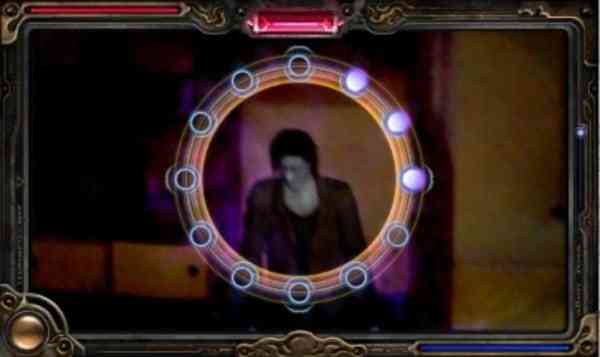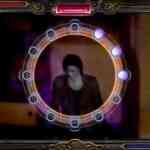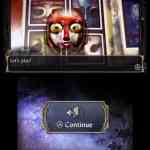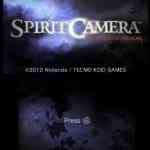When the Nintendo 3DS first arrived, I thought it was an impressive and innovative handheld machine. It provided 3D graphics that did not require 3D glasses; you could play Augmented Reality (AR) games with special cards; and interact with your environment using the gyroscope. To this day, I am surprised developers do not seem to take full advantage of all the things the 3DS has to offer. So when I heard a game called Spirit Camera: The Cursed Memoir was coming that would use AR and the gyroscope, I was very interested to see how that would play out. After playing Spirit Camera, I have come to understand a little bit in terms of why we do not see many developers take advantage of the 3DS’AR capabilities.
Spirit Camera is divided into three modes of play: the main story mode known as “Fatal Frame: The Diary of Faces;” a primarily picture taking mode known as “Haunted Visions;” and “Cursed Pages” which involves playing mini-games using a combination of the outer cameras and the accompanying AR book.
In story mode, you play as the story’s protagonist who receives a mysterious purple book known as the Diary of Faces. Upon opening the book and seeing the first page using the game’s “Camera Obscura,” you are transported into an old house that contains souls trapped there by an evil spirit. With the assistance of a girl named Maya, who has no memory of her past, you defeat ghosts using the Camera Obscura and solve the mystery of the house and help the spirits that inhabit the house.
As mentioned, the game uses AR technology with the accompanying booklet as its source. The booklet is composed of 16 pages and each page is essentially an AR card used throughout the game. As you play, you are instructed to use the 3DS’s outer camera or the Camera Obscure to view a certain page until it is ready to be seen by the lens. Once ready, the camera brings the page being viewed on the top screen of your 3DS to life. A typical scenario would be seeing the page with an in-game video on the page; a monster popping out the page for you to fight; or solving a puzzle.
In addition to the AR technology, some parts of the game enable you to see ghosts in your living environment as viewed in the top screen. Often these ghosts appear fleetingly and you must move the 3DS left and right in order to find them. If you are battling one of these ghosts, a glowing, yellow circle appears before a targeted enemy ghost and charges as your camera has the spirit in sight. When the circle becomes red, you take a picture with the “R” button, which gives the maximum hit to the enemy. You also press the button when the screen turns red as it signifies the enemy is about to attack. If you are successful in landing this, you avoid taking damage by the spirits. When your energy level is depleted, you die and can either retry where you last played or you can quit.
You would think being a Japanese horror and mystery game that the creepy and scary factor would be high and the gameplay would be smooth. Unfortunately this is not the case. Instead I just found myself frustrated. Imagine if you will the following scenario. You are playing underneath your kitchen lights that account for 6 CFL bulbs and one halogen IKEA desk lamp sitting on your kitchen table, shining its rays on your booklet. You are viewing the correct page and a spirit (a hand) comes out of the page. You defeat it the first time around without a lot of problems. Now imagine battling it again except this time you are required to move a little while keeping the AR booklet in sight so as not to lose sight of the target. Then imagine not being able to find the hand without getting too far from the sight of the booklet and thus losing AR image or even better, finding the hand right in front of you but no target circle coming out in order to defeat it. I for one did not have to imagine this as it happened to me over and over again. I had some troubles before with AR cards but they weren’t that much of a problem as long as you had some bright lights and some patience. This time, I was ready to give up out of pure frustration but decided to try it again except during the daytime in natural light. After about 30 minutes of adjusting the correct angle and slightly rocking back and forth, I was finally able to eke out a win over the all mighty hand that vexed me for two days.
From that moment, I learned a couple of things that developers should probably figure out. First, please do not combine the gyroscope with the AR cards if it requires moving around otherwise it makes for a frustrating experience. Out of desperation, I even tried moving the booklet with me as I moved around but no dice. Luckily for me, this particular situation of moving and having the AR cards in sight only happened once and after that there were not as many problems.
Another observation is that AR aspects of the game do not work very well under dark conditions or sometimes even bright ones. However, even if it works well under well-lit conditions, this certainly takes a lot away from any scary mood the game is trying to instil in you if you’re playing in a brightly lit room. I suppose it would have been too much to be able to capture the AR image in a dark room but it would have been really cool to at least “see” ghosts playing in the dark, late at night.
Despite a couple of hiccups, the story does have some creepy moments especially when ghosts pop out randomly. That said, I just thought battling ghosts in my living room would have been scarier than it was. The “Haunted Visions” feels gimmicky as you take pictures of your surroundings and it adds supernatural apparition in your pictures that you can save to view later. You can also take pictures of others and then have their face look distorted or fight a spirit from a person’s picture you took. The third mode called, “Cursed Pages” are mini-games using the AR booklet and are more interesting as they involve solving puzzles, using your memory and observation skills.
While the gameplay needs improving, the graphics are strong. The cut scenes are well done. In 3D, the spirits really pop out well, look somewhat smooth and give off the proper pale/bluish hue of death. Seeing the AR images come to life and move always impresses me and I can only imagine the possibilities this technology can do in the future.
Any game that attempts to be scary has to have good sound and Spirit Camera is no exception. It has the suspenseful music including the lonely piano and the obligatory echoing voices for further effect in the background. The voice acting was pretty convincing and is well suited to the game. Almost better than some horror movies I have seen.
Overall, Spirit Camera is a well-intended effort in terms of using all the 3DS’ capabilities to their fullest. The developers are certainly given credit for going places where others have yet to go. Taking a spooky 3DS game and using the AR functionality is something we have yet to see on Nintendo’s handheld machine. Despite this, the development team may have been a little too ambitious as the technology is lagging a little behind the idea in what would otherwise be considered an interesting game. Ultimately, Spirit Camera does not prove to be what it intended to be and that is a smooth interactive game that is scary. Also with the price of $39.99, I would definitely wait until it is bit cheaper and then grudgingly play it in a nicely lit area.








